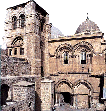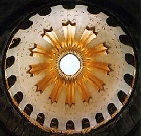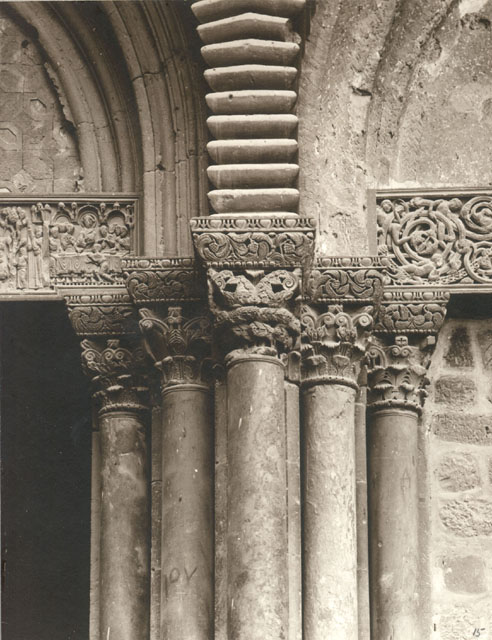
History
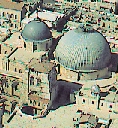
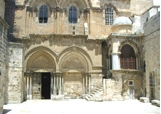
Following the
victory of the Emperor Constantine the Great over co-emperor
Licinius, Constantine established Christianity as a recognized
religion of the Roman Empire and went on to send his Mother,
Helena, to Jerusalem to begin a campaign of building churches
on the various Holy Sites that could be located.The place of
Christ’s crucifixion and burial were established by
tradition to be located underneath a pagan temple erected by
Emperor Hadrian sometime after 135 AD. Upon tearing down the
temple and digging up what appeared to be a quarry, the bishop
of Caesaria, Eusebius, attending the discovery states that upon the finding of the rock-cut tomb;
“contrary to all expectation, the venerable and hollowed
monument of our Saviour's resurrection was discovered.”*. It has
been put forward by Martin Biddle, professor Hertford College,
Oxford University, that it was possibly identifiable by
graffiti left by pilgrims before being buried and built over,
as many other early Christian shrines bear witness to.**
The builders
went on to carve away the mountain of rock that surrounded the
tomb, leaving only the free standing rock-hewn tomb chamber.
Over this was built an Aedicule (little house) which consisted
of two parts: A four columned porch over the forecourt and a
five columned octagonal marble structure surrounding the tomb
chamber. Surrounding the Aedicule was erected an enormous
circular basilica (known as Rotunda or
Anastasis (resurrection)). Also
constructed at the site were a basilican church (known as the
Marturion (testimony)) and an open-air inner courtyard
connecting the two and containing the Rock of Golgotha, the
hill upon which Christ was crucified. The basilica was
dedicated on September 13th, 335. These buildings probably
stood intact until 1009, despite various damage and lootings
that took place during the conquests of Jerusalem over the
centuries. Very little of this building remains today, though
some of it can be seen within the Russian Hospice and
Zelatimo’s pastry shop on Jhan es-Zeit Street.
 | ||
In 1009, for
reasons never fully understood in history, the Caliph al-Hakim
, Muslim ruler of Egypt and Palestine, ordered that all of the
Christian churches of the Holy Land be destroyed. While the
building of the Holy Sepulchre was clearly torn down, and much
damage was done to the Aedicule, pilgrims visiting the site
shortly after these events seem to indicate that the tomb
itself was not completely destroyed and it would appear at
least some of the walls and the bench upon which the Lord Jesus
Christ was laid was left intact under large piles of debris.
By 1036, the
re-building of the Church, its chapels and the Aedicule and had
begun by Byzantine Emperor Michael IV. This new Church, while
much less grand and smaller than that
built by Constantine was was completed in
1048
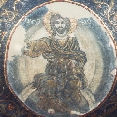 | ||
In 1099, the
Crusaders overtook Jerusalem. The construction of a much larger
church was immediately begun and continued for thirty years. As
part of this building, they constructed one building, which
would connect the existing buildings and cover all of the
chapels in the surrounding areas, as well as covering the space
which had been a courtyard between the tomb and Golgotha. It is
this building which stands today over the Holy Sites. In 1555
the Aedicule was rebuilt
from its foundation by Boniface of
Ragusa, Franciscan Custos of the Holy Land.
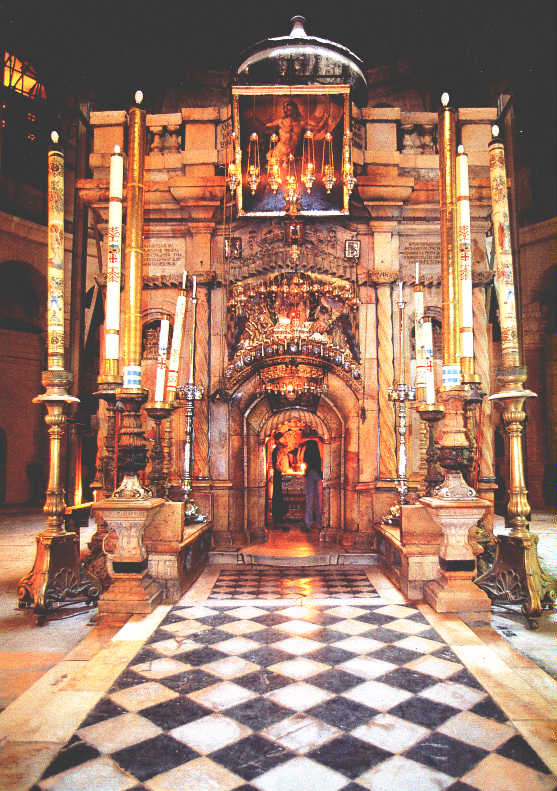 | ||
While the
church faced a variety of defacements over the centuries, the
Church of the Holy Sepulchre again stood intact without great
damage until 1808, when a large fire greatly burned and damaged
the church and edicule. Greek architect Nikolaos Komnenis led
the restoration efforts, which were completed in just under two
years. The main focus of these efforts were the rebuilding of
the Aedicule, of which, the outside had been badly damaged by
the fire. The restoration was dedicated in September of 1810.
This is the Aedicule that stands over the tomb today with only
minor structural supports added by the British in 1947 to help
hold together the building following damage taken by a 1927
earthquake.
In 1868 The
dome of the Rotunda of the Anastasis was
completely rebuilt and in 1997, work was
completed on the
inside of the dome.
